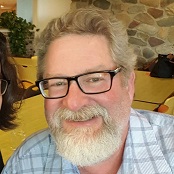|
|
1995 Media Coverage
- 1995: An article in Research, The Research Foundation of State University of New York, Annual Report mentions the SnB (Shake-and-Bake)
software program for determining molecular structures, which was developed by
Dr. Russ Miller
and members of the Hauptman-Woodward Medical Research Institute. The article
also mentions that the program is also available commercially through
teXsan, a software package manufactured by Molecular Structure Corporation.
Finally, the article states that SnB is expected to accelerate the use
of rational drug design.
- Fall, 1995: An article appears in FNSM Focus stating
that Dr. Russ Miller
was promoted to Full Professor effective September 1, 1995, that Dr. Miller
recently co-edited a special issue of Parallel Processing Letters devoted
to Dynamically Reconfigurable Architectures, and that Dr. Miller's SnB procedure
was mentioned in the "Developments to Watch" section of the March 6, 1995 issue
of Business Week.
- Fall, 1995: An article appears in the American Crystallographic
Association Newsletter that states that in the Crystallographic Computing
Show-and-Tell with Demos session one item that was "particularly striking"
was the report by
Dr. Russ Miller
about the routine solution of structures up to 400 atoms with the
Shake-and-Bake procedure.
- August, 1995: An article appears in IEEE Computer that is
currently unavailable.
- May/June, 1995: An article appears in PSC News
entitled "Shake-n-Bake (SnB)" that mentions that the SnB program
implements the Shake-and-Bake method of crystal structure
determination. The article states that using this method,
crystal structures are determined from raw crystallographic reflection
data. Further, the articles goes on to describe the method and then
mentions that the program was originally created for workstations and
"workstation clusters" before being ported to a Thinking Machines CM-2
using MPI. It also mentions the Cray T3D version that was originally
ported by Cray Research using PVM. The article states that the program
was in production as of March, 1995 and makes possible some very
large refinements of as-yet-to-be-determined structures. The article
states where the program is available on the PSC systems.
- May 28, 1995: An article in the Buffalo News entitled "Software developed at Buffalo"
states that the SnB software package for allowing researchers to look
at complex molecules was developed by scientists at the Hauptman-Woodward
Medical Research Institute and University at Buffalo. It also mentions
that the package has been used to solve a 400 atom structure.
- April 16, 1995: A note in the Buffalo News
states that the SnB software package developed by scientists at the
Hauptman-Woodward Medical Research Institute and UB allows for the
solution to complex molecular structures.
- April 3, 1995: An announcement appears in C&EN in
the "Software/Database Update" section announcing that SnB is available
for acquisition. The announcement gives a basic overview of SnB and
the successes it has had in the 100-400 atom range. It gives various
contact information for obtaining the program.
- Spring 1995: An article in FNSM Focus states that
Dr. Russ Miller
has accepted an invitation to give a presentation at the American
Crystallographic Association Annual Meeting in Montreal in July.
- March, 1995: In this issue of "In the News: University at Buffalo
in the National News" is the March 6, 1995 article from the Business Week entitled "How to Dope Out Molecules on
the Desktop" (see below).
This issue also includes an article from Scientist from March 6, 1995
entitled "Shake-and-Bake Structures" (see below).
- March 6, 1995: An article appears in Business Week entitled "How to Dope Out Molecules on the Desktop."
The article states that designing drugs to achieve maximum effectiveness is
extremely difficult and that determining molecules with as many as 400 atoms
used to be impossible. However, with a new method called SnB (Shake-and-Bake)
that initially was designed to run on a supercomputer,
Dr. Russ Miller
one of the creators of the method and parallel computer program, has
optimized the program to run on a traditional computer workstation.
The article then gives a description of the automatic and cyclical
Shake-and-Bake procedure for determining molecular crystal structures.
- March 6, 1995: An article appears in the Scientist
entitled "Shake-and-Bake Structures" that describes the Shake-and-Bake
method of molecular structure determination. The article states that the program
has been incorporated into teXsan by Molecular Structure Corporation and
is able to solve molecular structures with little human interaction. In fact,
the article states that the program can operate like a "black box."
- February 16, 1995: A article in the Reporter
entitled "Problem-solving shake and bake software package developed here"
reports that the software program that has solved in hours or minutes molecular
structures so complex that other methods could not solve them is now
commercially available. The article states that Shake-and-Bake is now
available through teXsan, a software package manufactured by Molecular Software Corp., which is one of the most widely used software packages by the
crystallographic community. The article quotes a manager from MSC who states
that SnB takes an entirely different approach to solving structures.
Dr. Russ Miller
is quotes as saying that "SnB has been able to solve structures that other
software packages have been unable to solve. So far, it has been able to
solve every structure presented to it." The article goes on to describe
the history of the development of SnB from its initial implementation on
massively parallel supercomputers to an efficient implementation that allows
it to be run on traditional workstations. Miller is also quoted in the
article as stating that "based on everything we currently know about SnB,
it should solve virtually any structure for which reasonable data are available."
|
